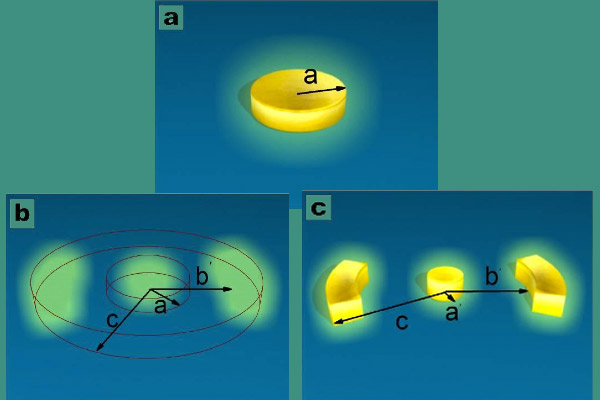Ghost Illusions Hide Objects in Plain Sight

Ghostly illusions could one day help disguise military aircraft for greater stealth, researchers say.
In the last eight years or so, scientists have discovered cloaking devices are possible, which can bend and twist light completely around objects, rendering them invisible. Cloaking devices that work against other kinds of waves are possible as well, such as the acoustic waves used in sonar.
However, such cloaks are usually limited to working against narrow ranges of frequencies for various types of waves. An international team of physicists instead explored devices that could potentially work against wide bands of frequencies, generating illusory ghosts as disguises.
"Our work has enormous potential to enhance our ability to mold, harness and perceive waves at will," said researcher Cheng-Wei Qiu, a physicist at the National University of Singapore.
The researchers created their prototype ghost illusion device from eight concentric rings of flexible plastic circuit boards, each a quarter-millimeter thick and about 3 millimeters (one-10th of an inch) apart. They coated these sheets with rectangular loops of copper about 3 millimeters wide on each side. This coating of copper was only 35 microns thick, about a third the average diameter of a human hair.
In experiments, the scientists placed a small metallic cylinder within the ghost illusion device. The rings scattered incoming waves from a radar scan, camouflaging the metal object as three items — one shrunken object in the original position and two ghost images on each side. [Eye Tricks: Gallery of Optical Illusions]
"We are now working with some defense agencies to consider a large-scale project," Qiu told LiveScience.
Get the world’s most fascinating discoveries delivered straight to your inbox.
In principle, the researchers can manipulate what illusions are seen by tinkering with the device in any number of different ways — for instance, by changing the shape and thickness of the rings, their number or how far apart they are, or the patterns of copper on the rings. They can make the original item vanish and make any number of ghost images appear in its stead, as well as engineer the appearance of those illusions.
"We can control how the ghost objects look in many ways," Qiu said.
In addition, although this prototype only presents one disguise, future devices might be able to change the disguise at will. The researchers are investigating whether placing antennas in the ghosting area might tune what illusions are displayed.
So far this device only works in two dimensions, on radar scans directed straight against its sides. The device could work in three dimensions with concentric spheres, rather than the rings used currently, Qiu noted.
In theory, ghost illusion devices that work in visible light can be created as well. However, every feature of the device would have to be shrunk to match visible light's smaller wavelengths. For instance, to work against a wavelength of visible light of about 600 nanometers or 600 billionths of a meter, one would need copper loops only 50 nanometers wide, about 2,000 times thinner than the average diameter of a human hair.
"The wavelength of light is not an issue, but fabrication is," Qiu said.
The scientists will detail their findings in a forthcoming issue of the journal Advanced Functional Materials.
Follow LiveScience on Twitter @livescience. We're also on Facebook & Google+.




